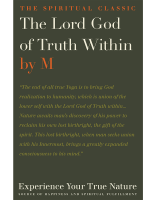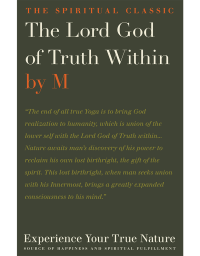There is much similarity between a man and a tree. The tree, like a human being, has its lungs, nerve channels, stomach, and intestines. It rids itself of its impurities through its roots like human beings. It is the action of this excretion which has much to do with bringing about poverty of the soil, for these excretions are either alkaline or acid.
When pine and beech trees are planted together, they render the soil alkaline, and this causes a cement-like layer to form about the roots, which prevents moisture from reaching them and retards the normal and healthy development of the tree.
Our flowers and trees all have their opposite complements which keep the soil fertile if they are allowed to commingle. The Druids and the monks of old were close observers of nature, and the oak tree was held by them to be the savior of the forest, for it is the health-giver, and when planted among pine and beech it counteracts all the mineral deposits formed by them.
Wherever it is planted it affords protection to the soil, and it is looked upon by the devas as the “great soul” of the forest, and it was consecrated to the element of fire. The vibration of fire, the highest of the elements, manifests through its vesture, and the Greeks held it in great reverence as the symbol of Jupiter, for it is truly the “lord of the forest,” and wherever disease has ravished, it has been nature’s instrument for bringing health to the soil.
The plant however becomes weak in its potential value, when man segregates it from the complementary plant or weed which accompanies it in its natural state. When the earth becomes worn out through extensive cultivation of wheat, it is because of the acidity which the roots of the wheat have infused into it, but such weeds as wild mustard (which thrives upon the acidity of the soil) return the earth to its natural health again.
In the deeper states of Yoga, the student becomes conscious of a vibration, as an alternating current, which can best be analyzed as an alternating rhythm of strength and gentleness; and he observes that plants which in their natural state give out acid excretions through their roots, are always blessed by association with their alkaline opposites.
Science today has discovered that in raising sugar beets, the ground quickly recovers its health if a little chicory is planted at the same time to neutralize the soil. Likewise in art the Chinese always balance strength and gentleness. When the farmers closely examine the weeds that appear after a crop has been harvested, they will read from nature’s book the process by which the devas seek to bring health and security to all living things.
If the student will try to commune with an oak tree, he will receive many illuminating impressions through his increasing perceptions, and if he can merge his atmosphere with that of the tree, he will find that it will give him a consciousness of nobility, strength, and power, for the oak tree is truly the seer and savior of the forest where, like a general, it watches over the health and conduct of the others.
In the early days, the alchemists and Rosicrucians, by noting the complementary flower or weed, recognized the medical properties of each and used them medicinally in their ministrations to their fellowmen. If sweets predominated in the patient’s food, they balanced these by adding vegetables which were bitter to the taste and their rule of health was, “Heal yourself, and keep your body fit by the things you eat.”
The higher devas inform us that they have a process of communication with beings, similar to their own nature, which inhabit the earth. These beings work to develop the soil into periods of activity, and periods of repression, when its activity is seemingly dormant.
In time science will discover many things in the earth, which have so far escaped observation. For instance, an archaeological friend of mine near Stonehenge, dug a pit six feet due East and West and six feet perpendicular, and on the mound of thrown out earth there appeared most peculiar flowers, but they would grow nowhere else except from the soil taken from a depth of six feet or more, thus showing that the different densities of earth hold different varieties of floral life. This soil when exposed to the sun and air, brought forth flowers entirely foreign to those which ordinarily grew in the locality.
The devas do not recognize the strata of earth in which the husbandman plants his seeds as a solid mass. To them it is an atmosphere interpenetrated by the activities of those atoms which exist in the subsoil; to them it has its movement and activity, but nothing solid, in the way that we would term a rock solid. To them it appears as a material which has fissures or lungs which breathe moisture in and out, and it is inhabited by myriads of elemental atoms which move in and out as nature breathes.
There is a lower class of sentient beings, which are not of the nature of minerals or of the gaseous vapor which the earth exudes. They have free movement through ordinary soil, and they pass through the interstices which separate the atoms. These intelligences are not looked upon with favor by the higher devic creation, for they are attracted to all kinds of refuse and decomposing matter of nature’s excrement, such as manure or decaying vegetable matter, and when they find an outlet into the soil, for instance, in a manure heap, their vibration changes it so that it becomes a danger through infection to the human blood stream.
In thickly populated places, the soil often becomes so infected by the debris cast off from humanity, that this, may we say elemental bacteria, is extremely dangerous to man, for it is worked over by the parasites of elemental nature, and becomes dangerous to the human blood stream.
In places like China, even the vegetables carry this bacteria, through being grown on infected ground, and they are not safe for human food till they have been brought to a boiling point.
When we get away from human habitations and enter into the consciousness of nature, we find that she impresses us with her desire for moisture or water, and we also discover that the subsoil itself has its own varying degrees of temperature, for the rise and fall of sap in a tree depends on the rise and fall of the temperature in the subsoil.
Let us consider a grove of trees. They can occasionally manifest the more active side of their elemental nature. Like human beings, they possess an elemental structure which enables them to leave their vehicles at night, just as man, in his sleep, can leave his physical body.
People with etheric vision can often see “tree” people (beings of the nature of trees) and they always present themselves in the form of trees, but with the power of locomotion. In different parts of the world, gypsies are closely associated with these tree people, for very often these tree elementals are strongly attracted to human beings, yet they are usually of a lower order of intelligence, and they often seek to frighten and terrify the seer. Just as astral shells are found in and near graveyards, so these forms will haunt the forests.
I know a man on whom I sometimes place my mind, in order to know how he is getting on. Directly my thoughts are centered on him, these tree people are immediately registered, and they seem to give me historical evidence of the man’s former life, when he associated with Hungarian gypsies.
When people ask you for help, you often feel their elemental connection with nature’s intelligence, high or low.
It may seem strange, but to the intelligences of nature, you are like a foreigner entering a strange country, and you are judged according to your conformity to their laws. They want to know if you have acknowledged the jurisdiction of their deva, and whether you will abide by their laws! When you acknowledge their law and show the desire not to break it in any way, then you sense a welcome from them. The acknowledgment of their law is brought about by thought and physical action. Facing the East, you bow to the forest seven times, then turning to the right you face the West, and your thought and movement is projected there, as you again bow seven times. Then, standing symbolically in the center, keep turning to the right until you face the North. You project your mind towards the North and bow seven times in that direction, then turning to the right, face to the South, and carry out the same exercise. You have now formed two lines across, and at the junction of the two lines you stand facing the density of the wood.
You have now come under the protection of the wood and of the deva, and if you sit there often to meditate you will soon see a movement in nature and be lifted into the world of the fairy—the middle world of nature—and you will become conscious of peace and beauty. It will often bring you forgetfulness of earthly things, and then much wisdom can come to you from the forest.
A little waterfall and its surroundings are delightful to those who have the vision to look into nature’s workshop, where the higher and the lesser evolved elements of nature work in peace and harmony, and the creations of the “tree” people, unperceived by normal eyes, absorb your interest. But behind all this phenomena is a great sermon of wisdom instruction which stimulates you to seek union with the Truth back of all phenomena.
The devas are constantly telling us that science has yet to discover the fixed principles in nature, and that when this is discovered then man will begin to realize his ignorance and lack of perception. He has made startling discoveries in his quest for Truth, but he has also been led into the byways of ignorance. In time he will realize that he has been dealing with protean elements in his study of chemistry, and that his search must be for the “fixed principles” in nature’s manifestations.
Man has delved deeply into the science of chemistry, and is satisfied. Some day he will discover that there are elements in chemistry which are both fixed and fugitive. He will find that his fixed principles are subject to slow change, and that the compounds are also going through slow changes. The mineral forces in nature change their activities intermittently and work in an entirely new field of endeavor, and those minerals which are allowed access to their field of activity no longer attract but oppose them. This intermittent change is the stumbling block of all scientific research. A force may vibrate a thing up to its supreme moment, and then at the end of a cycle of time, say seven years, an entirely different rhythm begins to dominate it. It is an alternating rhythm of strength and gentleness.
In like manner, man has recorded his scientific experiments as absolute truth, and then discovered that the scientific truth of yesterday is not the scientific truth of today. For instance, yesterday it was said that the primary colors were red, yellow, and blue, but science today, according to Maxwell and Munsell, regards the primary colors to be orange, red, and blue-green, and these colors produce all the others in the spectrum. What a change in the science of color since the time of Newton!
It is the men of greater perception who teach others to see. Claude Monet, the impressionist painter, was ridiculed by science in his early days, but afterwards it was acknowledged that his method of painting light and sunshine was correct from a scientific standpoint.
When we enter into the consciousness of nature, and view her movements with the higher clairvoyance, we see distinctly movements, bewilderments, immensity, and a grandeur which, if spoken about to the scientific man today, would be disbelieved. Paul du Chaillu, the African explorer, was laughed at for writing about his “supposed” discovery of the manlike ape, the gorilla, but later science had to admit the truth of his discovery.
We are privileged to know a great soul, a native red Indian, who has a knowledge of nature’s laws and remedies which science today would probably decry. He is a man who can do things which doctors are at present unable to accomplish. He once said to me, “If the white man had the graciousness of heart to approach the red Indian rightly, he might be given assistance which would prove of great benefit to his race. In the early days we were given missionaries and whiskey, and were driven out of our lands by the greed of the white man, but we are re-incarnating at this present time into the white race, and some day we shall regain that which we have lost—but we hold our knowledge secret until the time nature shall call it forth.”
The great souls among the red Indians today can produce the same type of phenomena which we hear of from Tibet and India, but their knowledge is adapted to their own climate and country. Some of the early Jesuit missionaries gained a good deal of information from them concerning the law of nature. The real priest is recognized by the real priest all the world over, regardless of his creed or costume. The initiated red Indians measure the spiritual man by valor, for it is spiritual valor which passes the initiate unharmed through any country or tribe.
The ideals of humanity vary according to fashion and circumstance. The “Gibson Girl” of yesterday, with her tightly laced waist, accented hips and breast line, shows the Victorian Age as it really was! Nowadays we never hear that famous Victorian expression “a fine figure of a woman.” In the old days we were taught that fitness of purpose and position was the first rule in art.
Nowadays neither fitness nor art explains those ridiculous little pill-box hats the ladies wear for covering, which cannot possibly afford protection against wind, sun, or rain. This is an artificiality of fashion. As a great poet has said, “True beauty ends where intellectual expression begins.”
When we recognize and acknowledge the laws of the devas, we are running true to the higher counterpart of elemental nature. People talk about the cruelties of nature, but if man looks about him, what has he to say for himself! There is a higher and a lower nature, as there is a higher and a lower man. The lower animal life of the woods destroys only that it may live, but man not only takes what he can gain from nature, but he also wages war upon his fellows in order to gratify his greed for wealth, power and possession.
An ancient Indian writer classified men and women after different types of animals. Science has not yet to our knowledge studied the similarity between animals and humanity, with the exception of the “bird man” type of aviator. The true type of airman is an exceptionally interesting study, for he typifies the elemental nature of air. One of them told me, “When I am up some thousands of feet, I think of the passengers behind me in the cabin, and I cannot help feeling that they are very inferior characters! I am in my element and I feel that I live in a world above them. Today I ran into a thick fog when I was returning with passengers over the Channel; my altitude gauge was useless for something was wrong with it, and as often happens, I had to reach port by intuition.”
Many of these “bird men” are occult students, searching deep into nature’s mysteries. I have also found that many of our best detectives have an extraordinary sense of perception and intuition, are strongly allied to elemental nature, and are very humane.
Unfortunately this trait is not shown in the conventional detective of the films which is responsible for an erroneous idea of American law and order! If the average American could meet the officials in our European cities he would be impressed by their courtesy, politeness, and sense of humor.







